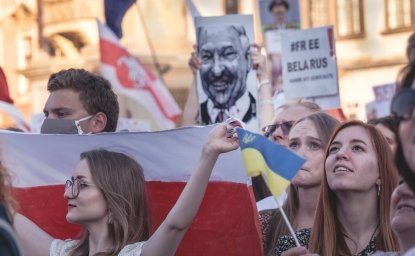When the Berlin Wall came down, Eastern Europe liberated itself and the Soviet Union collapsed, the role of U.S. international broadcasting was universally recognized. In the wake of these world-changing events, Václav Havel, Lech Walesa, Boris Yeltsin and other new leaders insisted that Radio Free Europe (RFE), Radio Liberty (RL) and the Voice of America were central to the peaceful democratic transitions in their countries. Western broadcasts provided essential information to all those dedicated to change and helped accelerate that change. Cuba is approaching such a moment, and once again the United States has a powerful instrument in place to help shape the outcome.
Miami-based Radio and TV Martí was established in 1984 on the model of RFE and RL as a “surrogate” broadcaster to provide accurate information about developments in Cuba and the world otherwise denied to Cubans. The RFE/RL experience suggests that Martí’s role will become more important as diplomatic relations with Cuba are restored and cultural, educational and economic ties with the United States expand. With domestic media still tightly controlled, Cubans will turn to Martí for information on civil society, human rights protests, local opposition blogs, travel rules, economic developments, controversy within the regime — in short, for all domestic news and with a focus on voices from Cuba about Cuba.
This comprehensive surrogate media role will not be performed by CNN or other commercial media. Nor should it be viewed — as some U.S. diplomats have viewed RFE and RL from time to time — as an irritant to improved state-to-state ties. One day, when Cuba is as free and democratic as the former communist countries of Eastern Europe with their own thriving free media, Martí will not be needed. Until then, it can play a key role in fostering peaceful democratic transition in Cuba.
Martí has impact. Once derided for its unsuccessful efforts to telecast from an airplane flying just beyond Cuban airspace, TV Martí grounded that plane in May 2013. Its programs are now carried 24/7 on Hispasat satellite TV and on DirecTV, which penetrate not just Cuba but most of Latin America. Martí distributes both DVDs — 59,000 in 2014, and currently about 15,000 per month — and flash drives containing its radio and TV programs throughout Cuba, where they are copied and distributed by volunteer networks of activists, journalists, bloggers, members of opposition political parties and churches. Martí launched Reporta Cuba in May as a social platform that collects complaints and other information through dozens of citizen reporters across the island. And every day, Martí airs video packages produced on the island itself by independent video journalists denied access to Cuban media.
Martí also reaches Cubans on the Internet, almost nonexistent in Cuba only a few years ago. On the day President Obama announced his intention to reestablish diplomatic relations with Cuba, more than 27,000 visitors visited martinoticias.com for news, analysis and context. The president’s speech was broadcast live with simultaneous translation, and when prisoner Alan Gross landed on U.S. soil, his news conference was carried live to Cuba on Martí’s broadcast and Internet channels.
Martí programming is classic surrogate fare — information Cuban media would carry if it were free. Martí reports on the Cuban economy, including corruption, are among the only objective assessments anywhere. Martí provides extensive coverage of women’s issues, and it covers Cuba’s public health challenges. It devotes continual attention to the activities of dissidents and human rights advocates — such as the famous Ladies in White. News of its hemisphere — for example, protests in Venezuela — is a daily offering, and its special programming on media and a free press is extremely popular.
An indicator of Martí’s effectiveness is the efforts by the Cuban regime to block its programs. The regime continues to jam Martí radio broadcasts with some success, especially in Havana. But Martí has countered by buying time on commercial stations in Miami whose signals reach the island successfully. The regime also attempts to prevent access to the Martí Web site, which the Martí leadership circumvents by providing proxy servers.
No one should assume that Obama’s overture to Raúl Castro will result soon in a free press, any more than were Mikhail Gorbachev or Wojciech Jaruzelski ready to relax their control of Soviet and Polish media until domestic pressure forced them to do so. We should expect the Castro regime to fight tooth and nail to prevent media freedom, and it is likely that the regime will intensify measures to derail Radio and TV Martí as the broadcaster informs Cubans about the deepening crisis of the current system. Again, Radio Free Europe and Radio Liberty are precedents. Attacked and vilified by flailing regimes (Jaruzelski constantly complained to the U.S. Embassy about RFE Polish broadcasts), the Radio Frees doubled down and fulfilled their historic role.
Post-communist transitions may be protracted and suffer reversals. But we know from our experience on the front lines of U.S. international broadcasting that unforeseen events can enhance the role of surrogate free media and accelerate change. Obama’s decision to reestablish diplomatic ties with Cuba, regardless of whether it is followed by liberalization or more repression, is likely to be this kind of game-changer for Martí. This is the moment for which Radio and TV Martí were created. The White House and Congress should make available the resources necessary for Martí to provide Cubans with information that will help them gain their freedom.
The opinions expressed here are solely those of the authors.
This article was originally published in The Washington Post.





